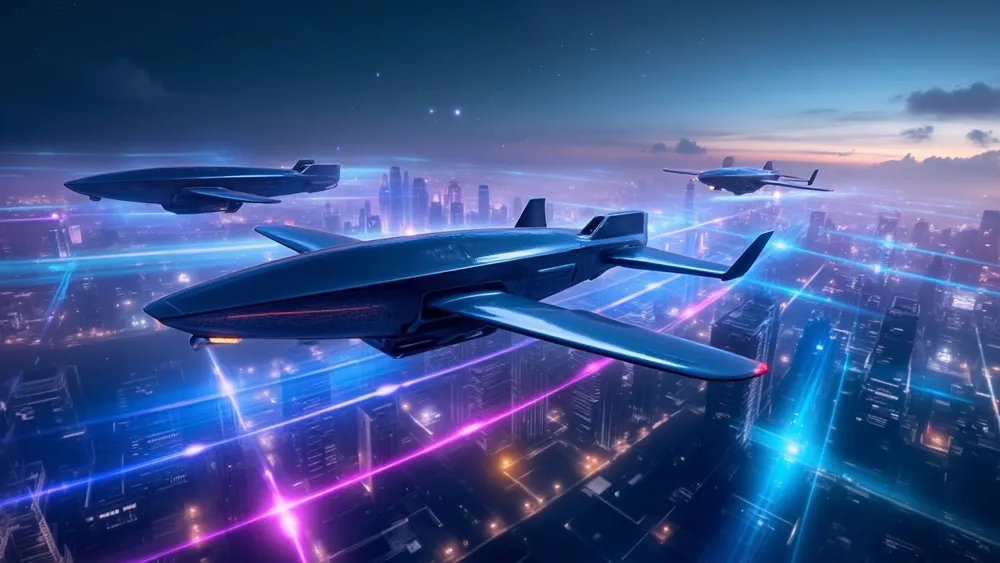AI Drones Revolutionize China's Skies: The Future of Aerial Intelligence

The drone industry in China is entering an exciting new phase characterized by enhanced cognitive capabilities, driven by the integration of artificial intelligence (AI). This transformation is shifting unmanned systems from mere remote-controlled devices to autonomous problem-solvers capable of handling complex tasks. The advancements were prominently showcased during the recent Drone World Congress, which concluded on Sunday in Shenzhen, highlighting the industry's robust growth and innovation.
At the ninth Drone World Congress, a record 825 enterprises exhibited over 5,000 drone models, with a particular emphasis on "AI+" innovations that are redefining potential applications in several fields such as infrastructure, heritage preservation, disaster response, and urban governance. This surge in technology indicates a pivotal moment where drones are becoming integral to various aspects of modern society.
One notable demonstration came from DJI's Matrice 4E, which is being utilized in a restoration project for the ancient Nankan Grottoes in Sichuan province. By autonomously plotting precise flight pathways around the intricate cliffside, the drone successfully captured 18 GB of imagery, enabling the rapid generation of a detailed 3D model in just 1.5 hours. This showcases the ability of drones to perform complex tasks efficiently, reducing both time and manpower.
"The AI-driven workflow simplified what once required manual modeling, democratizing advanced applications," explained Cui Yu, a solutions engineer at DJI. He emphasized that integrated neural processors allow for real-time decision-making, paving the way for more sophisticated operational capabilities across various industries.
In the energy sector, drones equipped with lightweight AI chips are taking autonomous inspections to new heights. These drones can self-launch from designated nests, inspect equipment, and autonomously return for battery replacements. When it comes to disaster response, drones from companies like Autel Robotics are capable of assessing landslide scenarios instantly, generating real-time 3D terrain models that drastically reduce rescue planning from hours to mere minutes.
"Imagine telling a drone to patrol a district: it designs routes, detects anomalies, and even collaborates with robots," noted Liu Guozheng, marketing director at Autel, while presenting plans for what he refers to as "embodied AI"—a system that aims to coordinate cross-system missions effectively.
The production of civilian drones in Shenzhen saw a significant increase, rising by 48.2 percent in the first quarter of this year. Innovative companies like Wisson Robotics are pushing boundaries by merging biomimetic robotics with aerial platforms, employing drones equipped with flexible arms to perform tasks such as changing navigation light bulbs on the Yangtze River or clearing debris from solar panels during storms.
"Tactile AI allows for zero-contact operations in high turbulence—something previously unfeasible with rigid systems," Wisson's Cheng Hui explained, demonstrating how drones are now capable of lifting objects that weigh multiple times their own weight.
Despite the promising advancements, the industry still faces technical challenges. Persistent battery life limitations, electromagnetic interference that disrupts navigation, and regulatory frameworks that struggle to keep pace with technological innovation pose significant hurdles. "Safety is non-negotiable," stated Yang Peng, Secretary-General of the Drone World Congress, as he acknowledged the increasing necessity for data privacy protections within this rapidly evolving landscape.
Read These Next

Chinese Commerce, EU Trade Chiefs Set for New Talks in Paris Soon - Exclusive Report
Chinese and EU trade chiefs will meet in Paris to discuss cooperation amid global trade uncertainties and rising protectionism.

Ghanaian Embassy in the US Temporarily Closed Amid Corruption Investigations
Ghana's embassy in Washington is suspended due to suspected corruption; reforms are planned, impacting the country's international image.

Navigating New Legal Frameworks: Implications for Corporate Performance in China
This article analyzes a Chinese company’s legal framework and governance implications as per the latest Company Law updates, reflecting on their impact on corporate performance and strategy moving forward.
